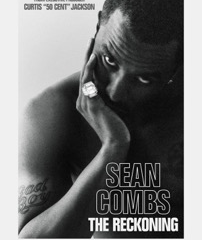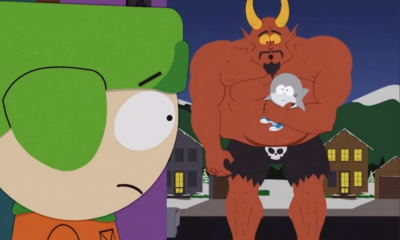Entertainment
Crystal Hefner Details “Robotic, Odd” and AWFUL Sex with Hugh Hefner on January 25, 2024 at 8:02 pm The Hollywood Gossip
Crystal Hefner has opened up about something both very personal and, unfortunately, very painful.
On Tuesday, the former centerfold released her memoir, Only Say Good Things: Surviving Playboy and Finding Myself.
Of note across the Internet in the wake of this release, Crystal delves into what her sex life was like with Hugh Hefner, the founder of the aforementioned men’s magazine… who sounds like a rather terrible human being.
Hugh Hefner and Crystal Hefner attend Playboy Mansion’s Annual Halloween Bash at The Playboy Mansion on October 25, 2014 in Los Angeles. (Photo by Charley Gallay/Getty Images for Playboy)
Crystal — who married Hefner in December 2012 and who was still his wife when Hefner died in September 2017 — writes at one point about how she snagged an invite to The Playboy Mansion and was then selected to make her way to Hefner’s bedroom.
Once there, Crystal says she noticed a chandelier covered in underwear — “like some kind of carousel of trophies” — while a great deal of adult entertainment played on four televisions around the bed.
She said she was told to change into silk pajamas… and then Hefner pulled out a locked box with a joint in it.
Crystal pretended to take a puff and then?
“He grabbed a bottle of baby oil off the nightstand and oiled himself up. Then he looked up at the four of us and waited.”
Hugh Hefner and Crystal Harris arrives at the TCM Classic Film Festival’s gala opening night world premiere of the newly restored film “A Star Is Born” at Grauman’s Chinese Theatre on April 22, 2010 in Hollywood, California. (Photo by Alberto E. Rodriguez/Getty Images)
Continued Crystal Hefner:
“He gave an impatient, questioning smile and opened his hands in a gesture that suggested, ‘Who’s first? Let’s get a move on.”
Ever since his death, more and more first-hand reports have come out about Hugh Hefner, with numerous ex-partners saying he pushed drugs on them and tried to control their every move.
In 2022, long-time girlfriend Holly Madison referred to the Playboy Mansion as toxic.
Hugh Hefner and Crystal Harris arrive at Stansted Airport on June 2, 2011 in Stansted, England. (Photo by Dan Kitwood/Getty Images)
According to Crystal in her book, “there were no condoms in sight.”
Nor was there any “kissing or romance or intimacy” involved in the “odd and robotic” love-making.
She felt it was “like Hef was just going through the motions of something that had once been fun and sexy,” before saying she was the second woman to mount him that first night.
“My body wasn’t ready, but it didn’t matter because of all the baby oil. I was very much outside my body watching the show,” she writes.
“Above the bed was a huge mirror, and while I was on top of Hugh Hefner having sex with him for the first time, he didn’t look into my eyes once. He stared to the side and up, watching the view from above in the mirror.”
Crystal Hefner attends the Premiere of ‘My Truth: The Rape Of Two Coreys’ at Directors Guild Of America on March 09, 2020 in Los Angeles. (Getty Images)
This all sounds so nauseating.
“There was nothing sexy about it,” Crystal continued. “This wasn’t about making love. It was about power and control and leverage. It was a performance. I was auditioning for a part.”
At one point, Hefner brought out some sex toys and the women around him pretended to use them.
Shortly afterward?
Hefner “suddenly” waved them off his loers and “grabbed himself to finish the job,” Crystal writes.
She described the final moments as Hef “moaning and flailing and flopping like a fish trying to get back to water” — saying “his face contorted as if he was in pain” and calling it, “the strangest five seconds of my life.”
Hugh Hefner poses at Playboy’s 60th Anniversary special event on January 16, 2014 in Los Angeles, California. (Photo by Charley Gallay/Getty Images for Playboy)
As for that baby oil?
“We were all getting infections from the baby oil — it wasn’t supposed to be used as lube,” says Crystal.
“I tried to tell him … but you couldn’t really tell him anything he didn’t want to hear. We tried to replace the baby oil with lube, but when we weren’t looking, he would always switch it back.”
In general, Crystal felt Hefner “had never taken a moment in his entire life to figure out how to please someone else,” saying that for someone who was “the poster boy of sexual liberation,” she never left the bedroom feeling “very liberated” herself.
Only Say Good Things: Surviving Playboy and Finding Myself is available now wherever books are sold.
Crystal Hefner Details “Robotic, Odd” and AWFUL Sex with Hugh Hefner was originally published on The Hollywood Gossip.
Crystal Hefner has released a memoir in which she delves into what it was like to sleep with the founder of Playboy. It sounds terrible.
Crystal Hefner Details “Robotic, Odd” and AWFUL Sex with Hugh Hefner was originally published on The Hollywood Gossip.
The Hollywood Gossip Read More
Entertainment
What We Can Learn Inside 50 Cent’s Explosive Diddy Documentary: 5 Reasons You Should Watch

50 Cent’s new Netflix docuseries about Sean “Diddy” Combs is more than a headline-grabbing exposé; it is a meticulous breakdown of how power, celebrity, and silence can collide in the entertainment industry.
Across its episodes, the series traces Diddy’s rise, the allegations that followed him for years, and the shocking footage and testimonies now forcing a wider cultural reckoning.

1. It Chronicles Diddy’s Rise and Fall – And How Power Warps Reality
The docuseries follows Combs from hitmaker and business icon to a figure facing serious criminal conviction and public disgrace, mapping out decades of influence, branding, and behind-the-scenes behavior. Watching that arc shows how money, fame, and industry relationships can shield someone from scrutiny and delay accountability, even as disturbing accusations accumulate.

2. Never-Before-Seen Footage Shows How Narratives Are Managed
Exclusive footage of Diddy in private settings and in the tense days around his legal troubles reveals how carefully celebrity narratives are shaped, even in crisis.
Viewers can learn to question polished statements and recognize that what looks spontaneous in public is often the result of strategy, damage control, and legal calculation.
3. Survivors’ Stories Highlight Patterns of Abuse and Silence
Interviews with alleged victims, former staff, and industry insiders describe patterns of control, fear, and emotional or physical harm that were long whispered about but rarely aired in this detail. Their stories underline how difficult it is to speak out against a powerful figure, teaching viewers why many survivors delay disclosure and why consistent patterns across multiple accounts matter.
4. 50 Cent’s Approach Shows Storytelling as a Tool for Accountability
As executive producer, 50 Cent uses his reputation and platform to push a project that leans into uncomfortable truths rather than protecting industry relationships. The series demonstrates how documentary storytelling can challenge established power structures, elevate marginalized voices, and pressure institutions to respond when traditional systems have failed.
5. The Cultural Backlash Reveals How Society Handles Celebrity Accountability
Reactions to the doc—ranging from people calling it necessary and brave to others dismissing it as a vendetta or smear campaign—expose how emotionally invested audiences can be in defending or condemning a famous figure. Watching that debate unfold helps viewers see how fandom, nostalgia, and bias influence who is believed, and why conversations about “cancel culture” often mask deeper questions about justice and who is considered too powerful to fall.
Entertainment
South Park’s Christmas Episode Delivers the Antichrist

A new Christmas-themed episode of South Park is scheduled to air with a central plot in which Satan is depicted as preparing for the birth of an Antichrist figure. The premise extends a season-long narrative arc that has involved Satan, Donald Trump, and apocalyptic rhetoric, positioning this holiday episode as a culmination of those storylines rather than a stand‑alone concept.
Episode premise and season context
According to published synopses and entertainment coverage, the episode frames the Antichrist as part of a fictional storyline that blends religious symbolism with commentary on politics, media, and cultural fear. This follows earlier Season 28 episodes that introduced ideas about Trump fathering an Antichrist child and tech billionaire Peter Thiel obsessing over prophecy and end‑times narratives. The Christmas setting is presented as a contrast to the darker themes, reflecting the series’ pattern of pairing holiday imagery with controversial subject matter.
Public and political reactions
Coverage notes that some figures connected to Donald Trump’s political orbit have criticized the season’s portrayal of Trump and his allies, describing the show as relying on shock tactics rather than substantive critique. Commentators highlight that these objections are directed more at the depiction of real political figures and the show’s tone than at the specific theology of the Antichrist storyline.
At the time of reporting, there have not been widely reported, detailed statements from major religious leaders focused solely on this Christmas episode, though religion-focused criticism of South Park in general has a long history.
Media and cultural commentary
Entertainment outlets such as The Hollywood Reporter, Entertainment Weekly, Forbes, Slate, and USA Today describe the Antichrist arc as part of South Park’s ongoing use of Trump-era and tech-world politics as material for satire.
Viewer guidance and content advisory
South Park is rated TV‑MA and is intended for adult audiences due to strong language, explicit themes, and frequent use of religious and political satire. Viewers who are sensitive to depictions of Satan, the Antichrist, or parodies involving real political figures may find this episode particularly objectionable, while others may view it as consistent with the show’s long‑running approach to controversial topics. As with previous episodes, individual responses are likely to vary widely, and the episode is best understood as part of an ongoing satirical series rather than a factual or theological statement.
Entertainment
Sydney Sweeney Finally Confronts the Plastic Surgery Rumors

Sydney Sweeney has decided she is finished watching strangers on the internet treat her face like a forensic project. After years of side‑by‑side screenshots, “then vs now” TikToks, and long comment threads wondering what work she has supposedly had done, the actor is now addressing the plastic surgery rumors directly—and using them to say something larger about how women are looked at in Hollywood and online.

Growing Up on Camera vs. “Before and After” Culture
Sweeney points out that people are often mistaking normal changes for procedures: she grew up on camera, her roles now come with big‑budget glam teams, and her body has shifted as she has trained, aged, and worked nonstop. Yet every new red‑carpet photo gets folded into a narrative that assumes surgeons, not time, are responsible. Rather than walking through a checklist of what is “real,” she emphasizes how bizarre it is that internet detectives comb through pores, noses, and jawlines as if they are owed an explanation for every contour of a woman’s face.
The Real Problem Isn’t Her Face
By speaking up, Sweeney is redirecting the conversation away from her features and toward the culture that obsesses over them.
She argues that the real issue isn’t whether an actress has had work done, but why audiences feel so entitled to dissect her body as public property in the first place.
For her, the constant speculation is less about curiosity and more about control—another way to tell women what they should look like and punish them when they do not fit. In calling out that dynamic, Sweeney isn’t just defending herself; she is forcing fans and followers to ask why tearing apart someone else’s appearance has become such a popular form of entertainment.

 Film Industry4 weeks ago
Film Industry4 weeks agoDisney Brings Beloved Characters to ChatGPT After $1 Billion OpenAI Deal

 Film Industry4 weeks ago
Film Industry4 weeks agoNetflix Got Outbid: Paramount Drops a $108 Billion Cash Bomb on Warner Bros.

 Entertainment4 weeks ago
Entertainment4 weeks agoWhat We Can Learn Inside 50 Cent’s Explosive Diddy Documentary: 5 Reasons You Should Watch

 Business4 weeks ago
Business4 weeks agoGoogle Accused Of Favoring White, Asian Staff As It Reaches $28 Million Deal That Excludes Black Workers

 Entertainment4 weeks ago
Entertainment4 weeks agoSouth Park’s Christmas Episode Delivers the Antichrist

 Entertainment4 weeks ago
Entertainment4 weeks agoSydney Sweeney Finally Confronts the Plastic Surgery Rumors





















